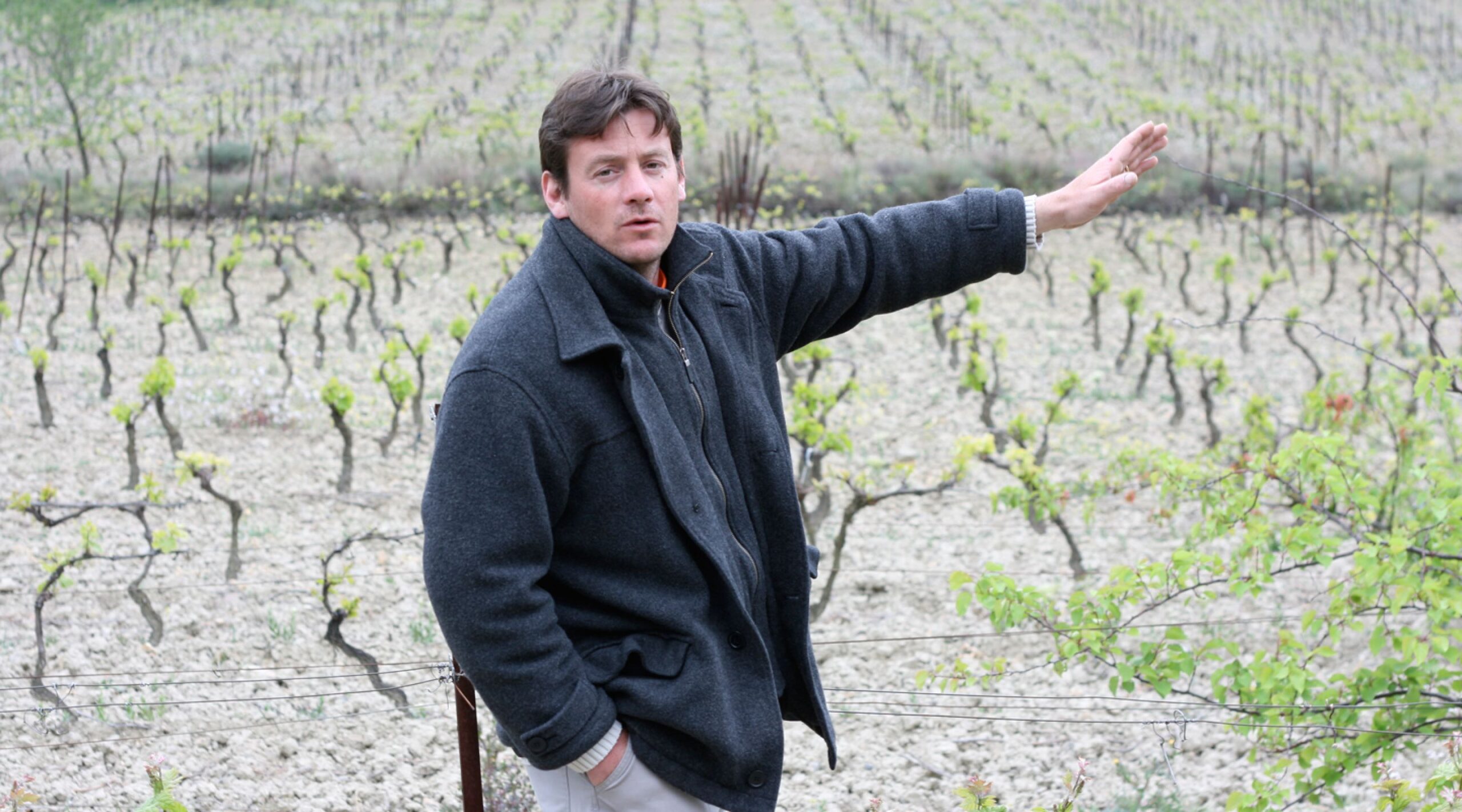Remains of a Roman winery have been found at the site of the Domaine Faillenc Sainte-Marie, a testament to the ancient tradition of winegrowing at that location. The domaine, in its present form, was founded during the reign of Louis XIV by an officer returning from service on the Indian subcontinent. Situated just outside of the tiny village of Douzens a mere 12 kilometers east of the ancient walled city of Carcassonne, Faillenc Sainte-Marie has recovered its past allure under the careful guidance of the energetic Gibert family and now produces an exciting range of red, white, and rose wines.
I had the good fortune of making the acquaintance of this delightful family when I drank a bottle of their wine while dining with Olivier Jullien (Mas Jullien) at Mimosa, a restaurant of exceedingly fine quality and taste located in Saint Guiraud, a little town in the Languedoc about an hour or so distant from the Faillenc and the Corbieres district. I barely waited for dinner to conclude before calling the Giberts to set up an appointment the following morning. We have been happily working together every year since 1991, the first vintage that we purchased.



Only vines, olive trees and some scraggly brush survive under these harsh conditions. As a result, yields are naturally low.
Faillenc Sainte-Marie is a small property, with only eight hectares of vineyards stubbornly clinging to the rocky foothills of Mont Alaric. The vineyards are buffeted by the northerwesterly Tramontane wind which blows over Alaric and by the southerly Autan breezes coming off the nearby Mediterranean, creating an extremely dry climate. Syrah, Grenache Noir, and Cinsault are the red grape varieties raised here. A small vineyard (1 hectare) is devoted to white grapes: Roussanne, Macabeu, Bourboulenc and Clairette. The terroir is composed of inhospitable, rocky limestone terraces. Only vines, olive trees and some scraggly brush survive under these harsh conditions. As a result, yields are naturally low. The grapes are strongly marked by their environment and this powerful character shows through in the wines. The charming, quirky personality, sense of humor and creativity of Dominique Gibert, as well as the sensitive and diligent vineyard work of his wife, Marie-Thérèse Gibert, also mark these wines, both in their style and in their names and labels (all designed by Dominique who is a practicing architect as well as vigneron).
Jean-Baptiste Gibert, son of Dominique and Marie-Thérèse, has now taken command of the domaine and has taken the steps necessary to have the vineyards certified organic. He has also expanded the estate and will increase the number of wines produced at Faillenc.
Farming
Practicing organic
Treatments
Copper sulfate only
Ploughing
Annual ploughing to maintain vineyard health
Soils
Limestone-clay
Vines
All vines are head-trained. Syrah is c. 40 years old; Grenache is 30-35 years old; and Carignan is c. 100 years old.
Yields
Controlled through severe winter pruning, debudding, and an occasional green harvest, yields average 50 hl/ha.
Harvest
Entirely manual, usually in late September
PURCHASING
Entirely estate fruit
Fermentation
All wines ferment spontaneously in concrete vats. Red wines see partial destemming, and rosé wine macerates for a few hours before being bled off. All blends are co-fermented.
Extraction
Red wines see a combination of punchdowns and pumpovers, depending on the nature of the vintage.
Chaptalization
None
Pressing
Pneumatic pressing
Malolactic Fermentation
Spontaneous, following alcoholic fermentation
Élevage
Corbières spends c. 18 months in fiberglass and cement vats. Noé ages in fiberglass vats. Circomference de presse spends c. 18 months in neutral, 500-l demi muids. Rosé and white wines age for c. 6 months in concrete vats.
LEeS
Wines remain on their lees until racking following malolactic.
FINING & FILTRATION
Rosé and white wines are fined with bentonite and see sterile filtration. Red wines are unfined and see plate filtration.
SULFUR
Applied at harvest and at bottling, with 60 mg/l total for white and rosé wines and 40 mg/l total for red wines.



